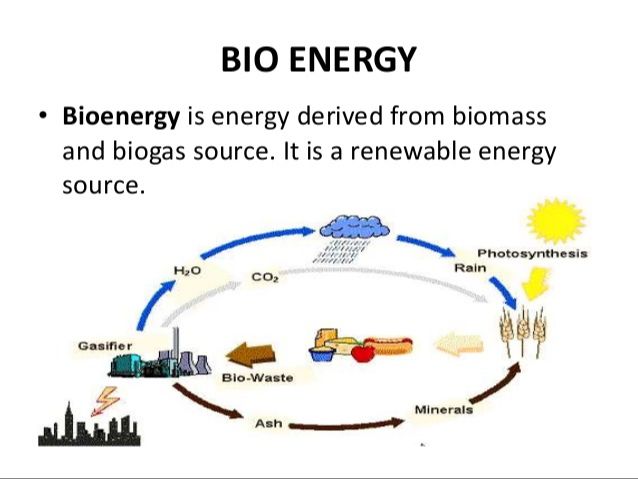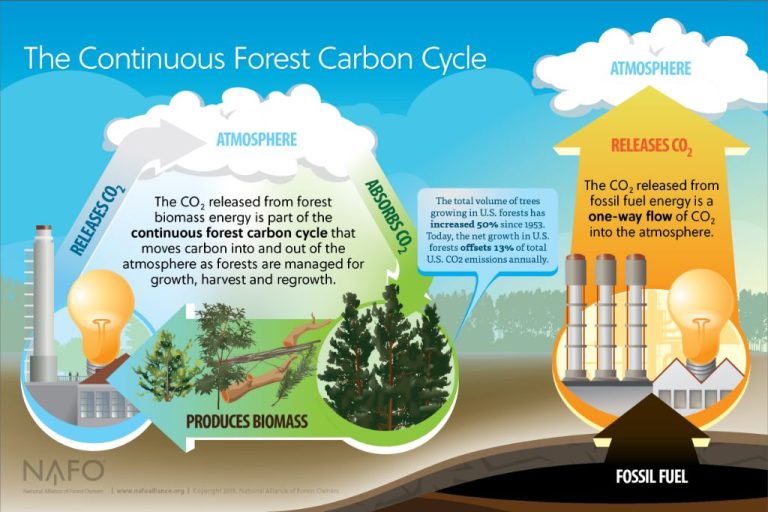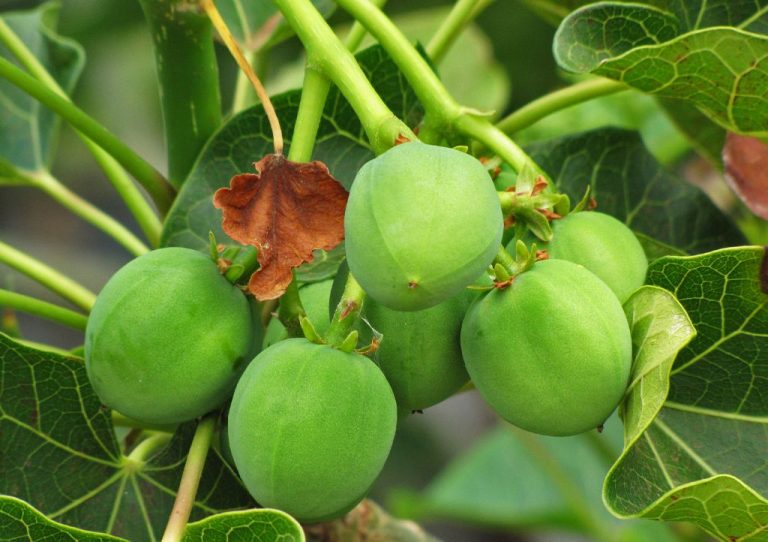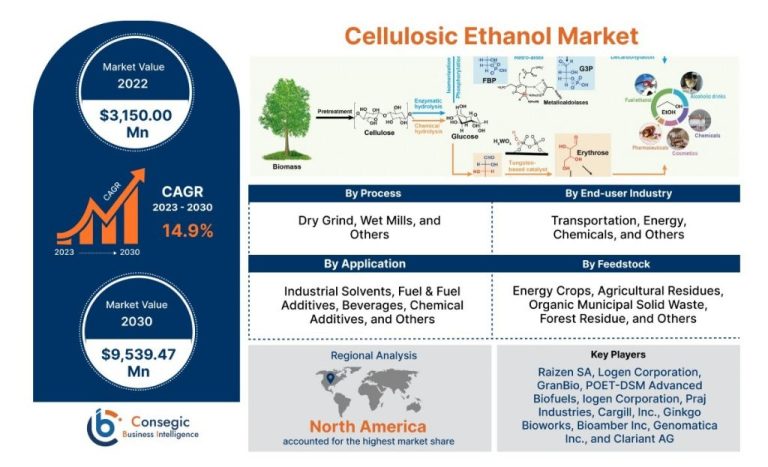What Energy Resource Is Bioenergy?
What is Bioenergy?

Bioenergy is renewable energy made from organic material such as plants and animal waste. According to the Merriam-Webster dictionary, bioenergy is “energy derived from biomass that can be used to produce heat, electricity, or vehicle fuel” (https://www.merriam-webster.com/dictionary/bioenergy). Simply put, bioenergy comes from recently living biological sources and can be used to generate various forms of energy.
There are three main categories of bioenergy:
- Biofuels: Fuels derived from biomass that can be used for transportation, such as ethanol, biodiesel, and biogas.
- Biopower: The use of biomass to generate electricity.
- Biogas: A mixture of gases, including methane, produced from organic materials in anaerobic conditions.
The organic materials used to produce bioenergy are called biomass feedstocks. They include:
- Plants such as corn, sugarcane, and soybeans that can be processed into liquid biofuels.
- Agricultural crop residues and waste materials like corn stover, bagasse, and manure.
- Forestry residues and waste such as dead trees, branches, and sawdust.
- Dedicated energy crops like switchgrass that are grown specifically for energy production.
Advantages of Bioenergy
Bioenergy is considered a renewable and sustainable energy source with several benefits over traditional fossil fuels like coal, oil, and natural gas. Some key advantages of bioenergy include:
Renewability – Bioenergy comes from organic material like plants and agricultural waste which can be replenished, making it a renewable resource unlike finite fossil fuels (FDCE). As long as biomass feedstocks are available, bioenergy can be produced continuously.
Reduced Dependence on Fossil Fuels – Increased use of bioenergy can reduce dependence on imported fossil fuels and improve energy security and independence (USDA). Bioenergy from local sources enhances energy reliability and insulation from global price shocks.
Lower Greenhouse Gas Emissions – Bioenergy production and use emits less greenhouse gases like carbon dioxide compared to burning fossil fuels. Widespread use of bioenergy can help mitigate climate change (FDCE).
Local Production – Bioenergy feedstocks like crops, manure, and waste can be produced locally, boosting local economies and providing income opportunities for farmers and rural communities (USDA).
Disadvantages of Bioenergy
While bioenergy has some advantages, it also comes with some downsides. Three key disadvantages of bioenergy are:
Need for Large Areas of Land
Bioenergy often requires large areas of land to grow the biomass needed for energy production. For example, biofuels like ethanol are made from crops like corn and sugarcane, which require substantial farmland to yield enough feedstock. This can displace land used for food production and lead to deforestation to clear more land.[1]
Less Energy Dense than Fossil Fuels
Bioenergy sources like wood pellets contain less energy per unit of volume compared to fossil fuels like coal and natural gas. This means more storage space is needed for bioenergy. It also costs more to transport bioenergy over long distances.[2]
Variability in Energy Output
The energy output from bioenergy depends heavily on environmental conditions. For example, hydropower output varies based on seasonal water availability. Biofuel crop yields can fluctuate due to pests, diseases, and weather effects. This variability makes bioenergy less reliable than fossil fuels.[3]
Biofuels
Biofuels are fuels made from biomass or organic matter. The two most common types of biofuels used today are ethanol and biodiesel (Biofuel Basics, Department of Energy).
Ethanol is an alcohol fuel made from the sugars found in crops like corn, sugar cane, and sugar beets. It can be blended with gasoline to reduce petroleum use. Most gasoline in the U.S. contains 10% ethanol (Biofuel | Definition, Types, & Pros and Cons, Encyclopedia Britannica).
Biodiesel is made from vegetable oils, animal fats, or recycled cooking greases. It can be used as a replacement for diesel in engines. Biodiesel is commonly produced from soybean oil in the U.S. (Biofuel Basics, Department of Energy).
Biogasoline is a biofuel made from biomass that can directly substitute for gasoline. It is chemically identical to petroleum-based gasoline but is derived from renewable sources like crop residues or waste materials (Biofuel Basics, Department of Energy).
Biopower
Biopower is a form of energy produced by burning biomass to generate electricity.[1] Biomass refers to organic matter that comes from plants and animals, and includes agricultural waste, forest residues, and animal manure. Biomass can be burned directly to produce steam, which powers an electricity-generating turbine. A wide variety of biomass feedstocks can be used, including crop residues, forest debris, waste wood, animal wastes, and perennial grasses.[1]
Another approach to generating biopower is through anaerobic digestion of organic matter. [2] This process uses anaerobic bacteria to break down organic material in the absence of oxygen, producing biogas. The biogas can then be captured and burned to generate electricity. Materials commonly used for anaerobic digestion include animal manure, food wastes, wastewater sludge, and crop residues.
In 2014, roughly two-thirds of biopower generation in the United States came from the burning of wood and wood waste.[3] The remaining one-third was produced from municipal solid waste and landfill gas recovery, as well as agricultural byproducts.
[1] “Biopower: Background and Federal Support,” Congressional Research Service, 2015, https://sgp.fas.org/crs/misc/R41440.pdf
[2] Mirzaee, Amirhossein, et al. “Impact of Biopower Generation on Eastern US Forests.” BioEnergy Research, vol. 16, no. 1, 2023, pp. 333–346., https://link.springer.com/article/10.1007/s12155-022-10360-0
[3] “Biopower: Background and Federal Support,” Congressional Research Service, October 6, 2010, https://www.everycrsreport.com/reports/R41440.html
Biogas
Biogas is a renewable form of energy produced through the anaerobic digestion or fermentation of organic waste such as manure, sewage, food scraps, and crop residue (https://www.homebiogas.com/blog/the-biogas-production-process-explained/). The main component of biogas is methane, which is produced by methanogenic bacteria that break down organic material in an oxygen-free environment (https://www.sciencedirect.com/topics/chemistry/biogas-production). The biogas production process involves hydrolysis, acidogenesis, acetogenesis, and methanogenesis stages to convert biomass to usable biogas (https://organicabiotech.com/biogas-production/).
Biogas provides an alternative to fossil fuels and has several applications. It can be used for heating, generating electricity, and as a transportation fuel. The methane in biogas can power stoves, ovens, generators, and even be upgraded to pipeline-quality gas. Converting organic waste into biogas has environmental benefits as well, including reducing greenhouse gas emissions, diverting waste from landfills, and producing a renewable energy source.
Sustainability Concerns
While bioenergy has many potential benefits, there are important sustainability concerns to consider regarding its large-scale use. One major issue is the food versus fuel debate. According to a NREL report, using croplands to produce biofuels could increase food prices and reduce food security. There are concerns that fuel crops may displace food crops, resulting in higher food costs and shortages.
Another concern is the carbon emissions resulting from land use changes to grow bioenergy feedstocks. Converting forests and grasslands to produce biofuel crops can release significant CO2 emissions that offset the emissions reduction benefits of biofuels. According to a study, estimates of carbon emissions from indirect land use change range from 10-340 grams of CO2 per megajoule of biofuel produced.
There are also risks to biodiversity from converting diverse ecosystems to monoculture plantations of bioenergy crops. The DOE reports that bioenergy production could negatively impact wildlife habitat, reduce species diversity, and increase use of fertilizers and pesticides. Sustainable practices are needed to grow bioenergy crops without displacing food production or damaging biodiversity.
Major Producers
A few countries dominate global bioenergy production, led by Brazil, the United States, and Germany:
Brazil is the world’s largest producer of bioethanol fuel, making it from sugarcane. Brazil produced over 30 billion liters of sugarcane ethanol in 2022, meeting about 50% of the country’s road transport fuel needs. Brazil aims to expand sugarcane ethanol production and use to help reduce carbon emissions.[1]
The United States leads global bioethanol production from corn, reaching over 60 billion liters in 2022. Corn ethanol accounted for about 10% of U.S. gasoline volume. The U.S. also produces biodiesel, mainly from soybean oil.[2]
Germany is the global leader in biogas production for electricity and heat. Germany generates over 10% of its total electricity from biogas produced from energy crops, agricultural residues, and food waste digestion.[3]
Other top bioenergy producers include China, India, Indonesia, and several European countries.
[1] https://visualizingenergy.org/what-countries-have-the-greatest-bioenergy-power-capacity/
[2] https://www.iea.org/data-and-statistics/charts/biofuel-production-by-country-region-and-fuel-type-2016-2022
[3] https://www.iea.org/data-and-statistics/charts/biofuel-production-by-country-region-and-fuel-type-2016-2022
Future Outlook
The future outlook for bioenergy is one of continued growth and innovation. According to a report by Conservation Law Foundation (CLF), bioenergy is expected to provide 20% of US energy by 2040, up from 5% currently (CLF Report Examines Future of Bioenergy). This growth will be driven by advancements in second generation biofuels produced from non-food crops and agricultural waste products. Cellulosic ethanol made from switchgrass, crop residues, and wood waste has the potential to provide much greater yields with lower environmental impacts than traditional corn-based ethanol.
There is also active research into developing viable processes for producing diesel fuel and jet fuel from biomass through biological and thermochemical processes. These second generation biofuels could substantially reduce greenhouse gas emissions from the transportation sector.
Additionally, continued improvements in efficiency and cost reductions are expected for biopower from biomass combustion and biogas from anaerobic digestion. With more efficient conversion technologies, bioenergy systems can provide carbon-neutral energy solutions at competitive prices compared to fossil fuels.
While some sustainability concerns exist regarding land use changes, bioenergy is poised to play an expanding role in displacing fossil fuels and reducing net carbon emissions globally. With ongoing technology advancements and proper sustainability practices, the future looks bright for bioenergy to make a major contribution to cleaner energy systems.
Conclusion
In summary, bioenergy is energy derived from organic matter such as plants, agricultural waste and garbage. It offers several benefits such as being renewable, widely available, and emitting less greenhouse gases than fossil fuels. However, large-scale bioenergy production raises concerns about sustainability, food security and biodiversity loss. The three main types of bioenergy are biofuels like ethanol and biodiesel used for transportation, biopower from the combustion of biomass for electricity generation, and biogas captured from organic waste and used for heating, cooking and electricity. While bioenergy utilization is growing globally, particularly in Europe, the United States and Brazil, its future expansion depends on technological advances and sustainable practices that don’t compete with food production or damage ecosystems.







